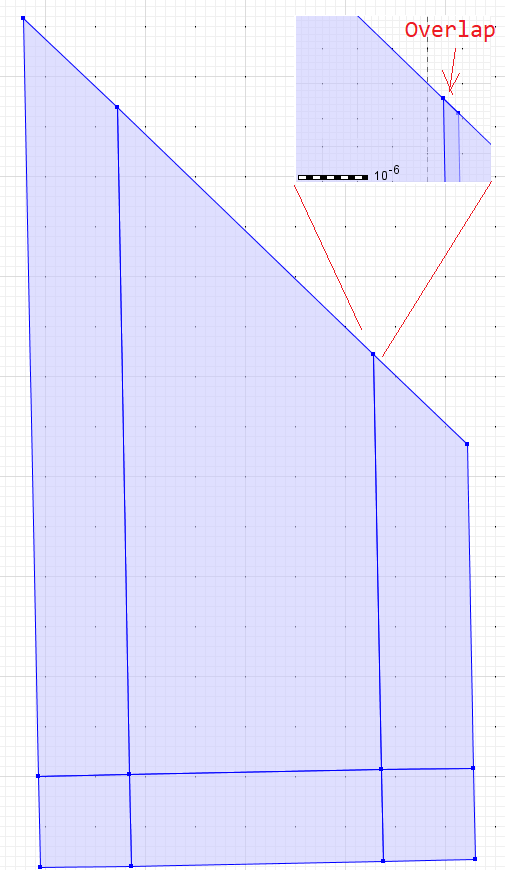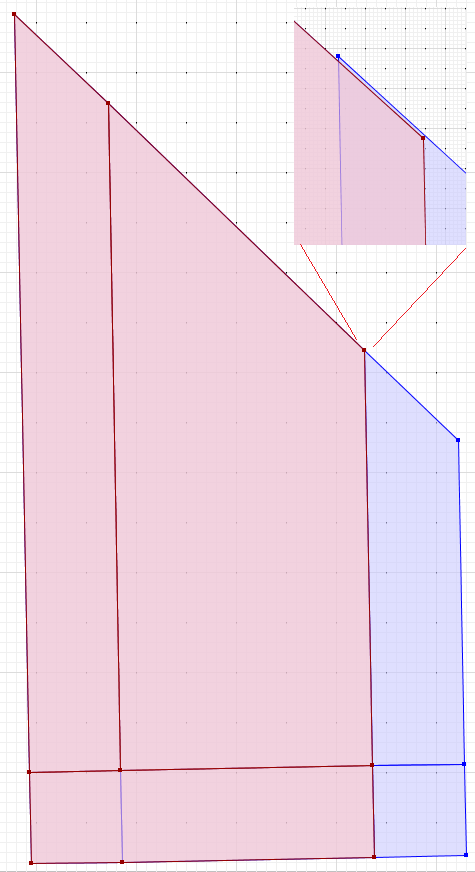Thanks for the detailed issue! I don't see anything wrong with the way you are using JTS (and it's interesting seeing JTS being used with modern functional Java code).
This does look like some sort of bug. I can run your test code and get the failure. The odd thing is that if I load the input GeometryCollection into the TestBuilder and run it it works correctly!
GEOMETRYCOLLECTION (POLYGON ((-16.15907384118054 1.0157206673651495, -16.28767148661218 7.6835050482212575, -13.719459554848422 5.212481574525698, -13.639456293556348 1.0643148816523527, -16.15907384118054 1.0157206673651495)), POLYGON ((-12.725226307666448 1.0819470369308437, -13.639456293556348 1.0643148816523527, -13.719459768757051 5.212481780339414, -12.78759751645274 4.315883851167196, -12.725226307666448 1.0819470369308437)), POLYGON ((-13.621824029083443 0.15008489786842, -16.14144162383529 0.1014906826722966, -16.15907384118054 1.0157206673651493, -13.639456293556348 1.0643148816523527, -13.621824029083443 0.15008489786842)), POLYGON ((-17.219533690879903 8.580102931174729, -16.28767148661218 7.683505048221257, -16.15907384118054 1.0157206673651495, -17.073303827070436 0.9980885120866584, -17.219533690879903 8.580102931174729)), POLYGON ((-12.707594043193543 0.1677170531469111, -13.621824029083443 0.1500848978684201, -13.639456293556348 1.0643148816523527, -12.725226307666448 1.0819470369308437, -12.707594043193543 0.1677170531469111)), POLYGON ((-17.055671609725188 0.0838585273938056, -17.073303827070436 0.9980885120866584, -16.15907384118054 1.0157206673651493, -16.14144162383529 0.1014906826722966, -17.055671609725188 0.0838585273938056)))
I'll keep digging and try and find out what's going on. It's possible it's something to do with numeric precision that only shows up when the data is loaded as Java double-precision literals - although would be surprising, given the extensive robustness heuristics in OverlayNG.
(Not sure if this is a bug or just me using JTS in an unsupported way)
The need: union ~5-20 polygons that may be (slightly) overlapping
My current implementation uses
new GeometryCollection(polygons).union()and it has worked reliably so far.However, I found one case where the union does not fail, yet the produced polygon is missing large areas.
Input:
Union result (red) over input (blue):
Versions used:
Test case:
Some notes:
GeometryCollection#unionandMultiPolygon#unionproduce the same incorrect result (displayed above)jts.overlay=ngflag makes the test pass - all 3 ways produce the same correct resultSo I guess my questions are:
GeometryCollection/MultiPolygonproduce a correct union for this slightly overlapping set of polygons? (i.e. is it supported)